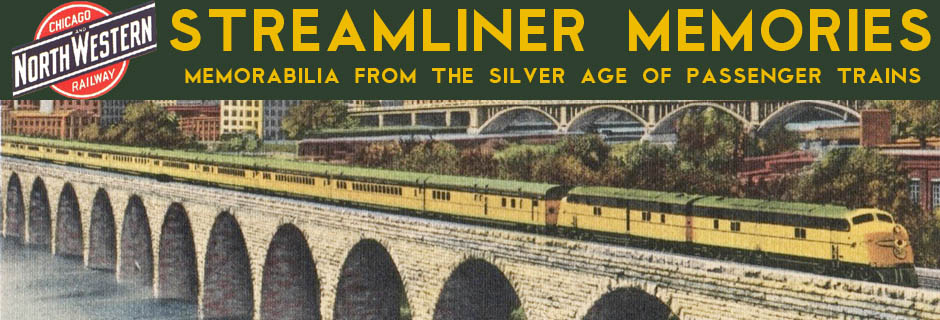General Motors’ FT is one of the most momentous locomotives in history as it convinced all but a few die-hards in the railroad industry that Diesels would replace steam locomotion. The first four-unit FT was completed in late 1939 and then went on an 11-month tour of the nation demonstrating the locomotive’s capabilities against the best steam engines the railroads had to offer. The tour persuaded 22 railroads to buy FTs. Greg Palumbo provided me with data cards for all of them, which I’ll be presenting today and over the following five days.
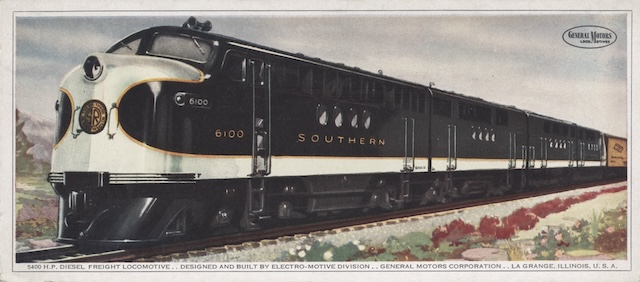
There is no signature on this painting but it appears to be the work of Harry Bockewitz.
After the tour, General Motors reconditioned the demonstrator and sold it to the Southern Railway, which took delivery in May or July 1941 (accounts differ). So while Southern wasn’t the first buyer of an FT, it bought the first one made. One unit, numbered 6100 in this painting but originally GM demonstrator 103, survives and has been restored to its original GM colors and is in a museum in St. Louis.
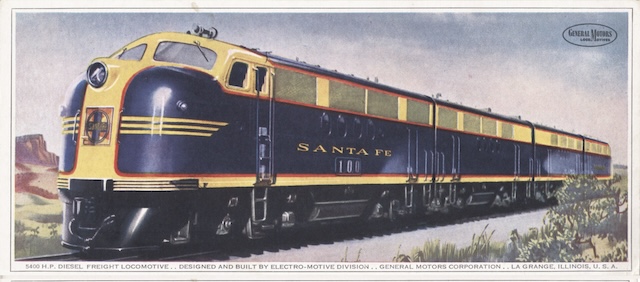
The signature is cropped out of this painting but it was done by Paul Meyer on November 4, 1940.
The first buyer of a new FT was Santa Fe, which took delivery of this four-unit locomotive in December 1940. For some reason, GM made two data cards of this locomotive, one using a painting by Paul Meyer and the other using a much later painting by Ben Dedek. Although they look similar, a close examination reveals they are not based on the same foundation drawing; Meyer probably didn’t even have a foundation drawing in 1940.
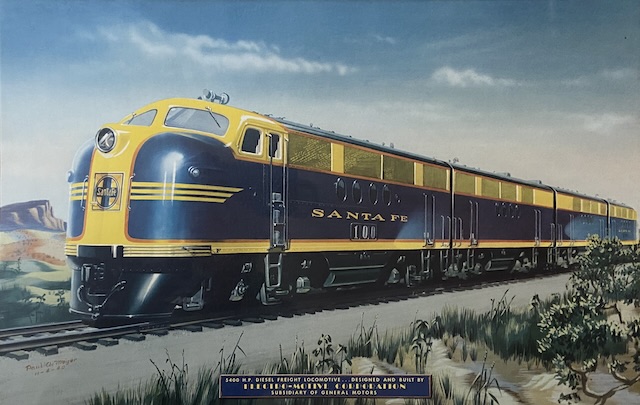
Click image for a larger view.
Here’s a print of Meyer’s original painting. Meyer’s foregrounds and backgrounds are much less detailed than Dedek’s.
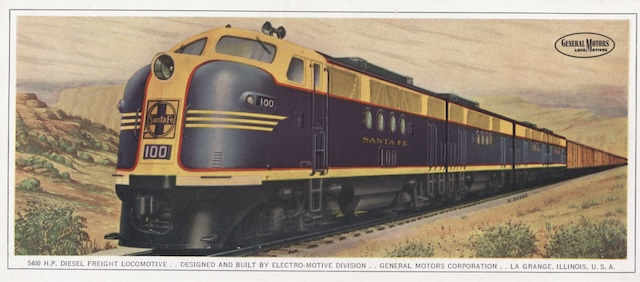
This painting is signed B. Dedek.
There are slight differences between the locomotives in the two paintings. Dedek’s has the number 100 written on the nose as well as tiny number boards beneath the cab. Photographs taken when the locomotive was delivered show the tiny number boards but not the large number on the nose, though it may have been added later.
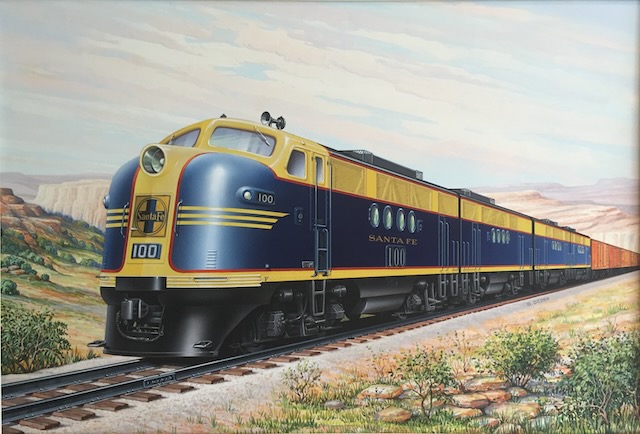
Click image for a larger view.
The biggest difference is Dedek’s painting shows low black boxes on the locomotive roofs; that’s part of the dynamic braking system or what the card calls the “”infinitely variable speed electric brake.” Not all FTs came with this, but Santa Fe 100 did. Meyer probably painted his version before the locomotive was completed.
Because it allowed the railroad an escape from having to find water to keep its external combustion engines steaming across the arid Southwest, Santa Fe was the most enthusiastic buyer of FT locomotives by far. The 155 A units and 165 B units it purchased amounted to 29 percent of all FTs produced.
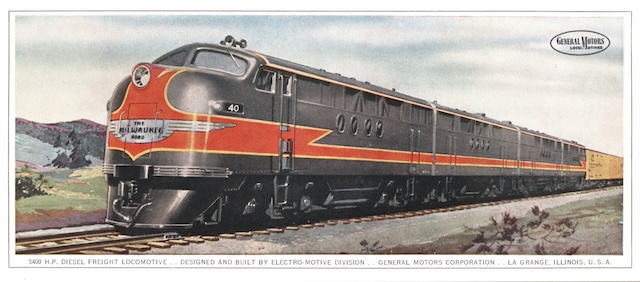
This painting is unsigned but looks like Bockewitz’s work.
The Milwaukee Road bought 26 A and 26 B units, taking delivery of the first one, 40, in September 1941. The red lightning bold stripe on an otherwise drab grey locomotive is certainly striking.
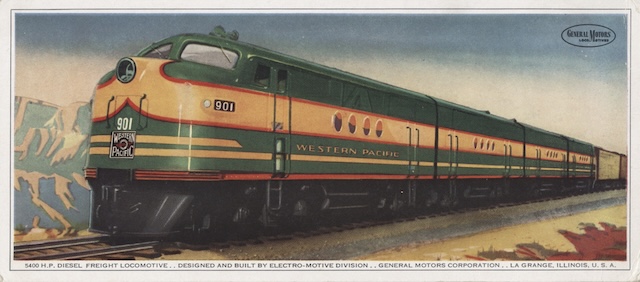
This painting is unsigned but looks like Paul Meyer’s work.
Western Pacific eventually owned 24 A and 24 B FT locomotives. General Motors initially sold them in sets of four that were only semi-detachable so that labor unions would not demand that crews be placed in each cab or, worse, each locomotive, which was normal for steam. Later it sold sets of three and, with later F locomotives, sets of one or two. In any case, when it says that WP bought 24 A and 24 B units, it really bought 12 A-B-B-A locomotives.
